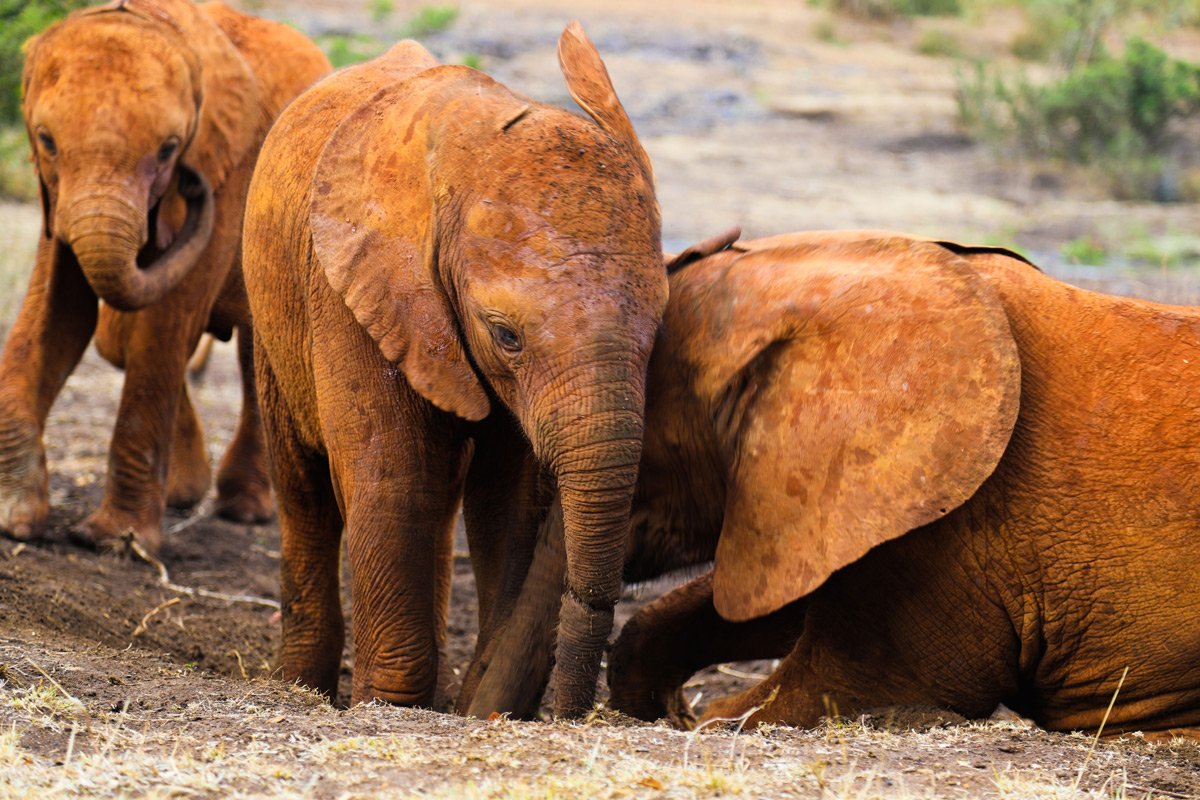Ndovu Mdogo Jasiri Sana – A Very Brave Little Elephant
1 August 2017 | The Mara | Steve Mitchell

This is the remarkable story of Enkesha, a one-year old elephant who was critically injured after being caught in a snare. But first a little background as to why these tragedies still occur.
Human-wildlife conflict is a constant threat and cause for concern in the Maasai Mara, as predators and elephants push the boundaries and foray into the neighbouring communities in search of easier prey or fresh farm produce. Another perennial battle facing conservationists is the protection of animals against poaching, particularly for the bush meat trade, which flares up with the arrival of the Great Migration each year. Thankfully the Mara Triangle is home to several outstanding conservation organisations, all working tirelessly to minimize the effects of human-wildlife conflict and eliminate poaching in its entirety. But sadly there are still causalities in this ongoing struggle.
In January of this year Enkesha was spotted with a wire snare around her trunk and clearly in deep distress. Just getting close enough to examine her required a coordinated team effort: the rangers of the Mara Triangle worked with the Mobile Veterinary Unit of the David Sheldrick Wildlife Trust (DSWT) and the Kenya Wildlife Services vet. The Mara Elephant Project’s helicopter was also called in to assist in isolating Enkesha from the rest of the herd.
With Enkesha safely immobilized, and just enough breathing room between the baby and her mother for the team to work with, the rescue team discovered that the snare had cut deep into her trunk, almost severing it completely leaving just a small portion intact. Whilst there are several known instances of elephants surviving without a trunk, this would obviously be a huge setback for the baby, and disable her for life. Performing reconstructive surgery in the wild is not an easy task, as Enkesha would need constant monitoring, medication and nourishment, all best delivered when in captive care and isolated from the rest of the herd. Finally the difficult (and heartbreaking) decision was made to take her from her mother and transport her to Nairobi.

The following day three vets set up reconstructing her trunk in a three hour operation: with 40,000 muscles (in comparison, humans have a mere 639), an elephant’s trunk is an utterly unique appendage, used for breathing, drinking, eating, smelling and touching, whilst at the same time being both delicate and strong. The operation was declared a success, yet two days later, in spite of being heavily sedated, brave baby Enkesha had managed to burst all of her stitches to the mounting concern for the team. Given the trauma she had just gone through and the amount of medication she was taking, the decision was made not to operate again, and rather to leave her to heal naturally. This was achieved through the loving, constant and meticulous monitoring of her caretakers at the DSWT sanctuary in Nairobi who worked round the clock to keep her happy, fed and infection free. The video below tells the story of her remarkable rescue.
Several months later, we are happy to report that her improvement has been remarkable, and her ability to use what’s left of her trunk exceeding the team’s expectations. Given adequate time, there is confidence that her trunk will continue to heal, to the point where she will be once again able to live a normal life in the wild.
So if you’re passing through Nairobi en route or back from the Mara, do pop in at the DSWT, and share a caring moment with Enkesha, appreciating the gift of life, and the tremendous conservation work to keep this baby, and other’s like her, alive and content.

For the full story of Enkesha’s rescue, please visit her profile on the DSWT website.
About the David Sheldrick Wildlife Trust: Widely regarded and respected as the world’s foremost orphaned elephant rescue and rehabilitation centre, the DSWT’s mobile veterinary clinic also plays a key role in providing much-needed assistance in the field. For more information on how to foster an orphaned baby elephant like Enkesha, and advice on how to take an “elfie”, please read this post or visit their website, and join the thousands of others who have been touched by their work.
About the Mara Elephant Project: On a noble mission to protect elephants within the greater Mara ecosystem in the face of poaching and expanding human development, the Mara Elephant Project is a boots-on-the-ground initiative making a profound difference in the region.



COMMENTS (4)
Lynne Keenay
August 1, 2017What an amazing story! As part of our visit to Kenya (which included our time at Angama Mara ) in January, we adopted a baby elephant at the Wildlife Trust and were lucky enough to visit him on our last day. The work that the Trust undertakes is just fantastic. The elephant population needs all the help we can give to ensure our children can grow up being able to see these magnificent animals. Thank you for the video clip – a few tears were shed!
REPLYFrancis C Bagbey
August 1, 2017I echo Ms. Keenay’s comment — an amazing story! Let’s hope this amazing animal continues her recovery and someday enjoys full use of her trunk!
REPLYNicky Fitzgerald
August 2, 2017Thank you for getting in touch dear Francis – that is our fervent wish, too.
REPLYNicky Fitzgerald
August 2, 2017Dear Lynne
REPLYThank you for this lovely post and for caring for Africa’s great creatures.
Warm reagrds
Nicky